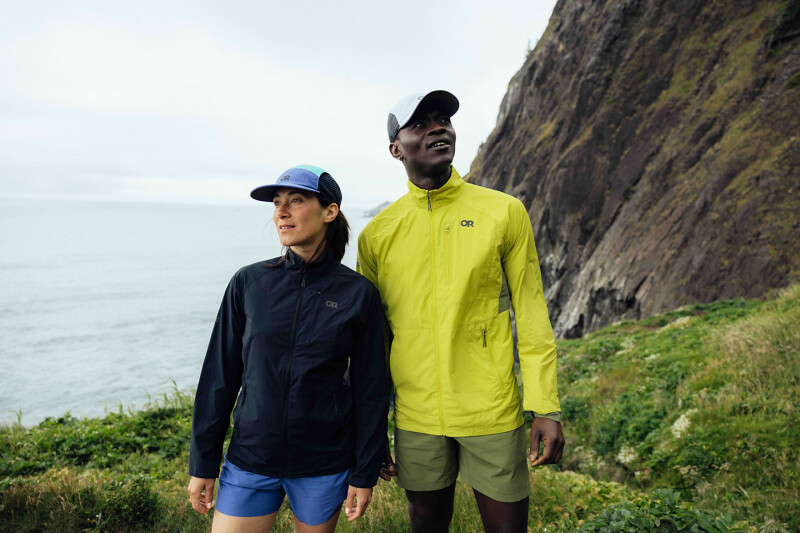Way back in 2006, Nike tried something particularly novel. In its run-specific Bowerman Series, Nike debuted a top-of-the-line neutral training shoe called the Vomero. But in an interesting twist, the original Vomero existed solely in the men’s catalog.
On the women’s side, Nike produced a near identical model it named the Percept. While the $110 Percept featured many of the same ultra-bouncy, uber-plush features as the Vomero, it did veer from its male counterpart in a few subtle ways. Most notably, the Percept’s upper included an expandable mesh in the forefoot to deliver a more forgiving fit and accommodate problematic bunions, an issue more prevalent among females.
Noble as Nike’s intentions might have been to bring a women’s-specific performance running shoe to market, the Percept was ultimately a short-lived experiment. The challenge, a former Nike employee tells Running Insight, was that a women’s-only shoe, even a near-replica of a men’s model, required The Swoosh to essentially market two different shoes. It became messy, inefficient and costly.
The following year, Nike ditched the Percept name and produced a men’s and women’s model of the Vomero 2 even as some of the same subtle design differences persisted.
These days, footwear brands such as Under Armour and Puma – you can even add Saysh, a newcomer helmed by Olympian Allyson Felix making its debut at The Running Event this month – to that list of women’s only shoe designs. All are giving the women’s-only running shoe another shot, developing singular models thoughtfully designed for the female foot and telling female consumers – boldly and loudly – they have a shoe for them.
Given that women represent nearly 60 percent of all race finishers and desire relevant solutions, it’s an intriguing bet by the brands to drive differentiation, conversion, loyalty and brand equity.
When Puma decided to reenter the running space, which The Cat did with a bang last year, it did so eager to understand and appease female consumers, in particular. If that meant eschewing tradition and engrained business practices, so be it.
Ditching ‘Pink It and Shrink It’
“If we were going to attack running, then we needed to be more inclusive of women and their needs,” Puma footwear innovation manager Laura Healey says.
That mindset spurred an ambitious question: What if we make a shoe exclusively for women?
It was an intriguing idea. After all, the “shrink-it-and-pink-it” philosophy well established in running footwear design has long been criticized for falling short on catering to women’s needs and addressing a few proven anatomical differences, such as narrower heels and wider forefoots.
“We know women aren’t scaled down versions of men, yet that’s how we designed shoes for them,” Healey says.
Around the same time, Under Armour employees engaged in similar conversations in and beyond its Baltimore-based headquarters. The brand began first moving down this gender-specific biomechanical path in its basketball footwear lineup, unveiling a women’s specific basketball shoe called The Breakthru in September 2020. The Breakthru’s quick success on the hardwood underscored the powerful science and emotion of making footwear for her and inspired movement toward a female-specific running shoe.
“We realized the compromises we were making in co-gendered product and we wanted to give women choice,” says Katie Lau, the global product director of train and recovery footwear at Under Armour.
After a year of scanning feet and identifying patterns in the female foot, Under Armour ditched convention and launched itself into a longer-than-normal two-year process of developing a shoe specifically designed for the female runner.
The result – the new Synchronicity – launched this past summer and incorporates everything Under Armour came to learn. The Synchronicity features a narrower heel, lower height in the toe box and a higher arch. Listening to women’s feedback about aesthetics as well, the model includes a more subdued Under Armour branding element on the heel.
“It is a more informed, purposeful and thoughtful product,” Lau says, adding that testers repeatedly used phrases like “locked in” to describe the fit.
The Puma Effort
Puma, similarly, combed through details of footwear to determine which elements of a running shoe could be better tuned to female athletes, investigating everything from the geometry to the midsole foam to the heel counter.
In testing, Puma recruited more than 220 runners to run four weeks in “a shoe engineered to support women’s needs” and a control shoe (a general Puma running shoe). More than 36,000 miles later, 80 percent of the women preferred the women’s-specific model.
Those findings emboldened Puma to bring the Run XX Nitro to market last summer. The model features a narrower heel, a lower instep and a wider forefoot as well as a wider base and a new Nitro foam designed to be slightly firmer and deliver a pinch more stability.
“The Run XX allows us to learn so much we can bring into other shoes, such as the last, fit and foams,” Healey says, adding that Puma’s goal moving forward is to develop both men’s and women’s footwear models in tandem. “There are aspects of footwear we can start to tune so we’re bringing more thought to all of our women’s footwear.”
It’s a learning process, both Healey and Lau acknowledge, but an exciting development for women in 2022, the 50th anniversary year of the landmark Title IX legislation that unlocked widespread competitive opportunities for women in sports.
“It’s positive other brands are joining us and investing in this space because women deserve it,” Lau says.







